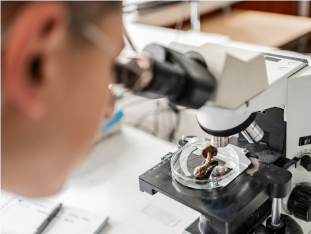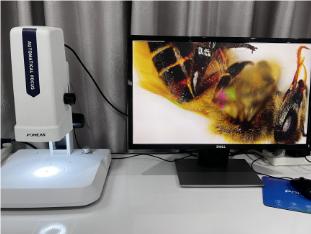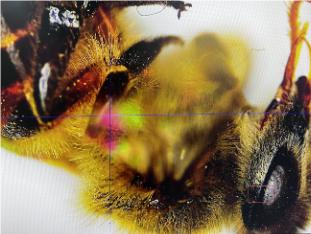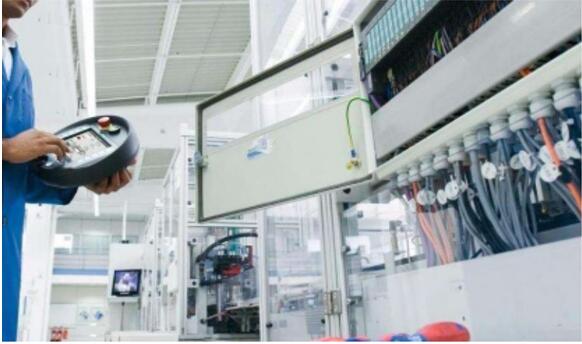
Detection background:


In the field of biomedical research, microscopy has always been a central tool for exploring the microscopic world. From cell structure to subcellular organelles, from biological macromolecules to nanoscale functional units. However, the limitations of traditional optical microscopes relying on manual operation have long constrained research efficiency and observation accuracy.
Observation pain points in conventional microscopy:
1. Low efficiency of manual focusing: When observing the fine structures of honey bees such as antennae and antennae, it is necessary to manually focus frequently to capture the details of different focal planes, which is time-consuming and experience-dependent, and can easily lead to visual fatigue or miss the key dynamics of the researcher.
2. Uneven lighting: Traditional lighting methods (e.g., unilateral light source) tend to form shadows on the surface of the sample, and the dense areas of honeybee villi (e.g., the base of the antennae) are prone to dark areas, which affects the identification of details.
3. Low efficiency: When it is necessary to obtain continuous images of a wide range of samples, it is necessary to refocus every time the field of view is switched, which is especially obvious under high magnification.
Autofocus microscope advantages:


1. Intelligent real-time focusing: Laser distance measurement combined with image contrast analysis technology, dynamically tracking the moving parts of the bee's antennae, mouthparts, etc., automatically locking the optimal focal plane


2. Uniform illumination and shadowless imaging: integrated circular LED light source and intelligent complementary light algorithm, eliminating the shadow of the honeybee body surface velvet, antennal folds, to ensure that 360 ° dead-angle-free observations


3. Ultra-high resolution imaging: supports 300X magnification and still maintains clarity, accurately rendering the microporous structure of the surface of the tentacle bristles and the three-dimensional morphology of the tentacle sensors.


The autofocus microscope is not only suitable for entomology, but also has great potential in the fields of neuroscience (neuronal synapse observation) and pathology (dynamic tracking of living cells). Its intelligent design lowers the threshold of operation, allowing researchers to focus more on the scientific problem itself, and pushing microbiology research into an era of high efficiency and precision.
Product recommendation
TECHNICAL SOLUTION
MORE+You may also be interested in the following information
FREE CONSULTING SERVICE
Let’s help you to find the right solution for your project!

- APPICATION CASE
- RESOURCE CENTER
- DOWNLOAD CENTER
SOLUTIONS SUPPORT
- ZOOM LENS SELECTION TOOL
- TELECENTRIC LENS SELECTION TOOL
- FA LENS SELECTION TOOL
- ZOOM RATIO TABLE
- CERTIFIED MODEL
SELECTION TOOL
- WHY POMEAS
- FAQ
- PRIVACY POLICY
- TERMS OF USE
- DELIVERY & RETURN POLICY
CUSTOMER CARE
 ADDRESS
ADDRESS
Add.:No.68, Chongwei Road, Baizhoubian, East district, Dongguan, China, 523000
CONTACT
 Tel:+ 86-0769-2266 0867
Tel:+ 86-0769-2266 0867
 Fax:+ 86-0769-2266 0867
Fax:+ 86-0769-2266 0867
 E-mail:marketing@pomeas.com
E-mail:marketing@pomeas.com

Wechat QR code

 ASK POMEAS
ASK POMEAS  PRICE INQUIRY
PRICE INQUIRY  REQUEST DEMO/TEST
REQUEST DEMO/TEST  FREE TRIAL UNIT
FREE TRIAL UNIT  ACCURATE SELECTION
ACCURATE SELECTION 